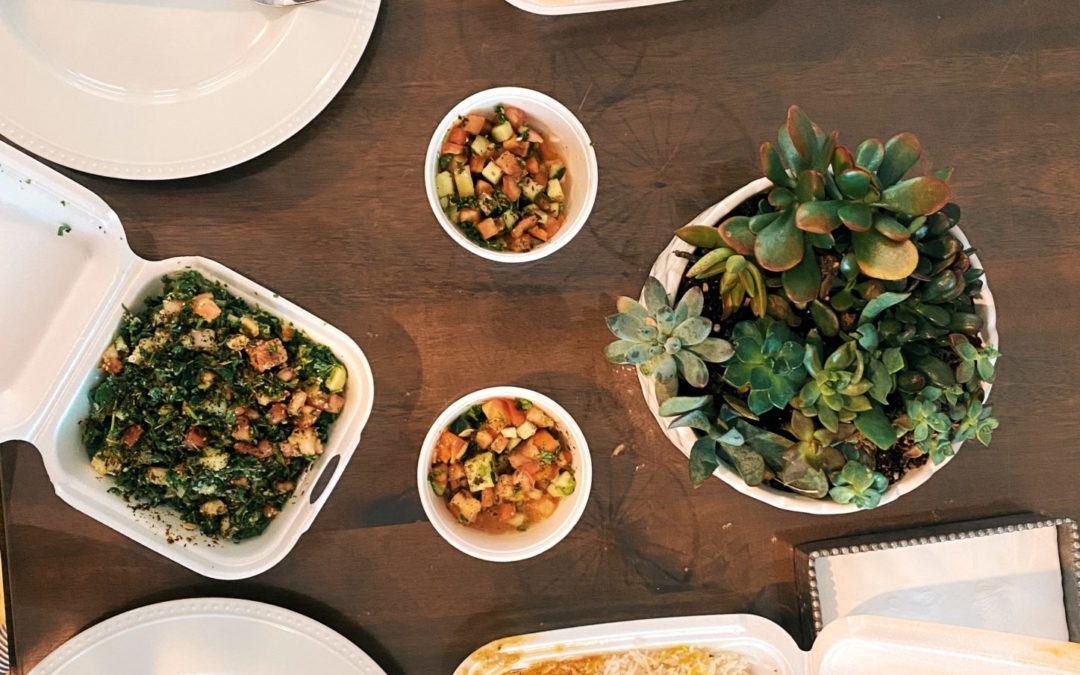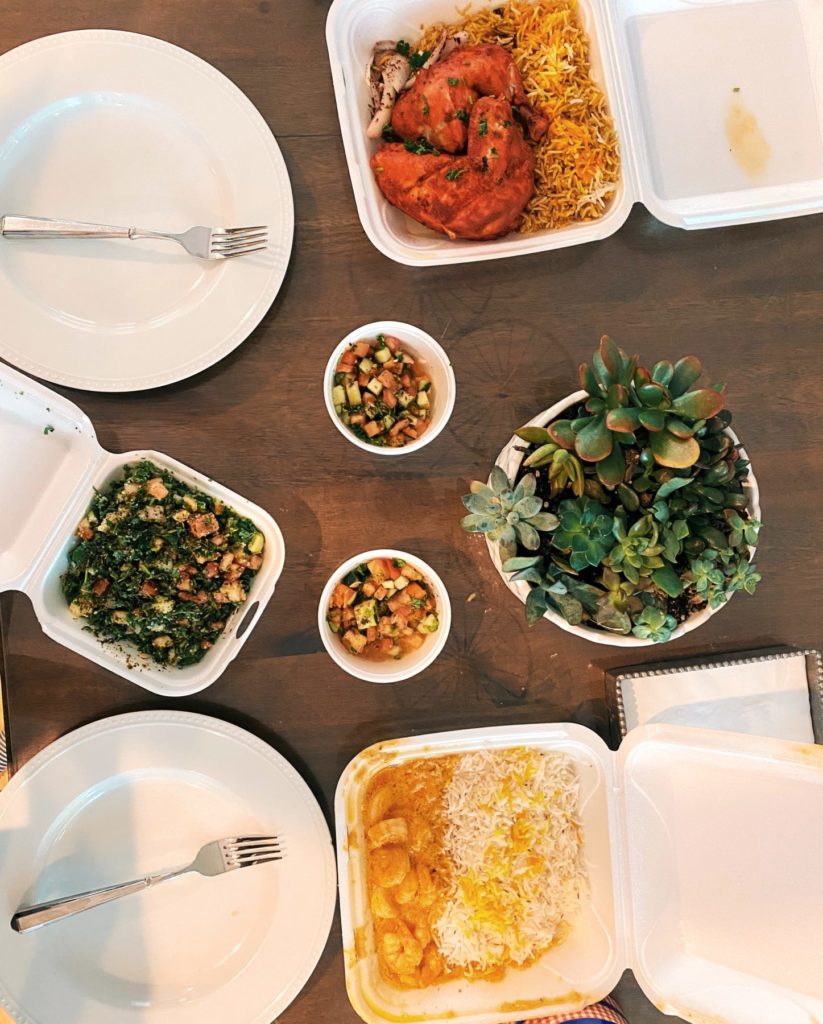Servers, bartenders – I miss you. But, this take-out will do. I was thinking, when I eat out at a restaurant, I savor it. I taste my food and sip my wine slowly so the magical moment of a date with my husband AND, most importantly, not having to put the kids to bed lasts. The experience of take-out? I’m still in my kitchen. The wild things still spill their milk and sprinkle rice their rice all over the floor. I eat quickly…just to get it over.
Since take-out has become the new date night, here are a few ways’ I’m going to try to enhance the experience + plus not over eat restaurant sized-portions.
Restaurant Vs. Take-Out and Overeating
I remember reading once that people eat more food at a restaurant when seated in a corner booth rather than a table in the center. I’m curious if eating takeout has the same effect? We’re eating the majority of our meals isolated in the comfort of our own homes with little accountability. It’s likely that eating take-out unconsciously causes us to eat more food with less quality. Here are a few ways to elevate your take-out experience and end your meal feeling comfortable vs. stuffed.
Before You Order – Aim to Divide It In Two
Many restaurants give large portions that could easily be two meals. When you’re at a restaurant, it’s often more challenging to ask your server to box up half your meal. But at home? That can be easier! When you plate your take-out, put half of it away in the fridge. You can always get it out if you’re still hungry. Not only will this help you eat a portion closer to what you’d serve if at home, but WIN – you don’t have to cook lunch tomorrow! And, of course, you’ll it just makes “cents” as well.
Make part of your meal yourself.
One things I’ve noticed is that many restaurants have removed their protein-rich (more expensive items) like fish off take-out menus. However, there is no shortage of pizza and pasta because those menu items survive the take-out experience. Perhaps add a leftover piece of chicken or fish to your pasta or pizza to balance out your meal.
Mindfully eat.
What does this look like during quarantine? It could look like choosing to eat at your table instead of in front of the television. Or taking it outside! A study published in the American Journal of Clinical Nutrition explored the connection between attention and calorie consumption. The study found that distracted eating leads to eating more during the meal. It also found that distracted eating causes eating more later because you don’t actually remember eating the meal (1). Another study found that children who eat meals while watching television were more likely to be overweight (2). Mindfully eating can also look like eating slowly and paying attention to when you are full. When eating, think about the journey your food went through to make it to your table and begin to appreciate it.
Eat your vegetables first.
Choose your vegetable, soups or salads first. Some research has shown that eating soup/salad or vegetable first enabled eaters to eat 20-50% less food at that meal. Our brain takes about 20 minutes to send a signal that we are full. By eating the lighter items first, you can avoid that uncomfortably full feeling. You will ultimately consume less calories as well.
Don’t get too hungry during the wait.
How many times have you ordered you food WHEN you’re already hungry! If you plan on doing take-out, order your food early so it arrives early. If you’re hangry when your food finally arrives, you’ll eat more. You’ll eat faster, and you are less likely to really enjoy the meal. If you missed your hunger window, grab a snack! This might seem counter-intuitive to eat while waiting for food, but it can help you manage mindful eating when that take-out arrives.
Here’s the deal. We. All. Need. A. Break. From.Cooking. So! Enjoy that take-out, just make sure it works for you, and you truly enjoy the experience of not cooking.
- https://www.health.harvard.edu/blog/distracted-eating-may-add-to-weight-gain-201303296037
- https://www.ncbi.nlm.nih.gov/pmc/articles/PMC3663732/


